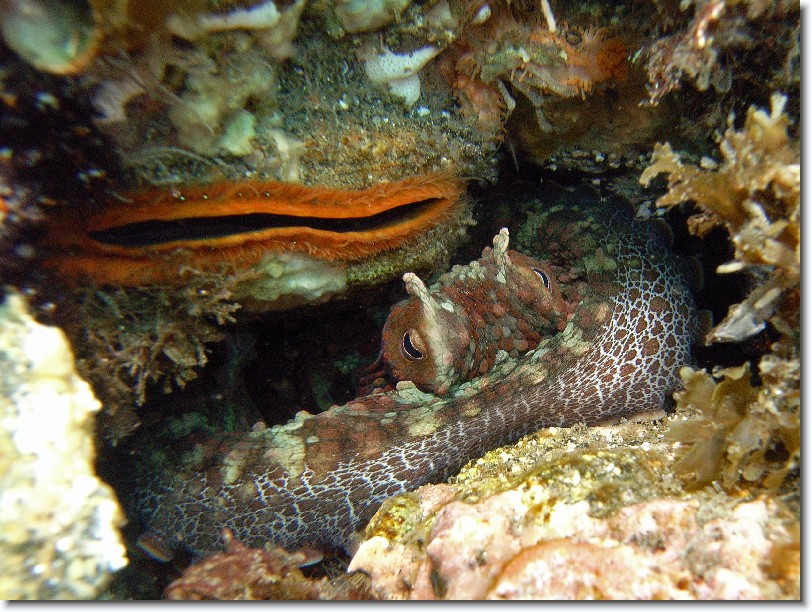Rich, I agree with you about the LCD screen... too small, too dark. I can't say it's hampered my aim too much ('cept when I came nose to snout with a 'cuda camo'd in some bottom weeds... I took a shot backing off, and just caught it in the corner of the shot).rjsimp:The first issue is when you "preview" the picture in the LCD. When you are shooting in manual and crank down the F-stop and increase the shutter to get the nice dark blues, it is VERY difficult to see the subject because the LCD tries to give you a "real-time" view with the settings taken into account (it doesn't realize the strobe will fill the image with enough light). There is no way (as there is on other cameras) to have the LCD view an uncompensated image with all available light.
Another real issue I found was (despite the review referenced earlier in this thread) the picture noise was not acceptable to me. Even at ISO 100, the noise was very noticable in the blues and in other areas of the photos (you can click on these I posted and see what I mean). ISO 200 was not even an option really, so you are really limited and the quality of the image is going to suffer.
The flash/write speed is really slow. It may have a fast shutter speed, but the write speed was pretty slow and the flash did not recharge until the write was finished so it would take even that much longer. You wouldn't believe how many shots I missed because it would take too long to recharge.
Finally, and this wasn't a huge problem, but the "RAW" format is some sort of special TIF image that many programs have issues reading. The noise was still present in the TIF so it made no difference to me and I didn't use it.
All in all, the camera was pretty good for someone wanting to take beginner pictures, but if you wanted something higher quality and be able to shoot 100+ pictures on a dive, then it probably won't work for you. I ended up getting the D200 as my new camera to replace that 8000G and I LOVE it.. of course, that is a totally different animal.
http://i25.photobucket.com/albums/c80/rjsimp/Cayman062006/M0010121.jpg
RAW format... I don't believe the 8000G even has a RAW format, so, I'm not sure what you're referencing.
Write speed will depend on two things. Since it's a high megapixel camera, if you have it set to a one of the top resolutions (which results in pics in the multi-megabytes), it's going to take longer to write. That will be true of any cam, and isn't typically useful for printing or saving (unless you're going to be blowing it up to 11x14 or larger). However, even then, it can still be somewhat mitigated by using a higher speed SD card (the newer cards can be written much faster then the internal memory, or the lower cost cards).
Finally (and I don't have an external strobe, so I can't comment authoritatively), an external strobe can be fired independently on the 8000D, and cycled much faster, if you're looking to speed up the process. This wouldn't interfere with the shutter delay, which is *very* fast.
I do agree it's not meant to be a professional rig, and as such has it's limitations. However, I kept my cost under a grand, and I'm happy... Glad you are too, with the D200.
-Barry




